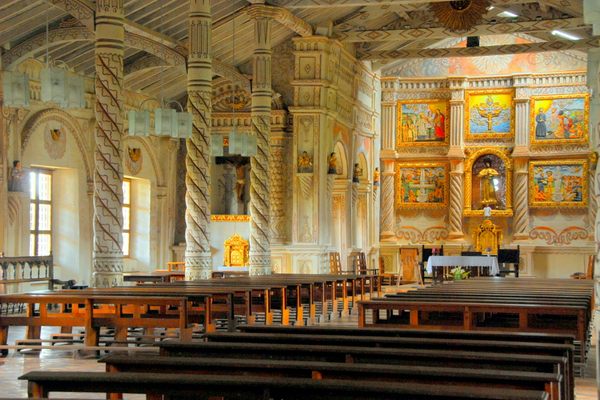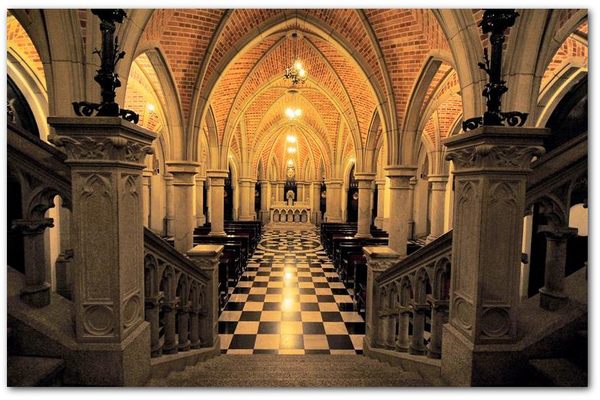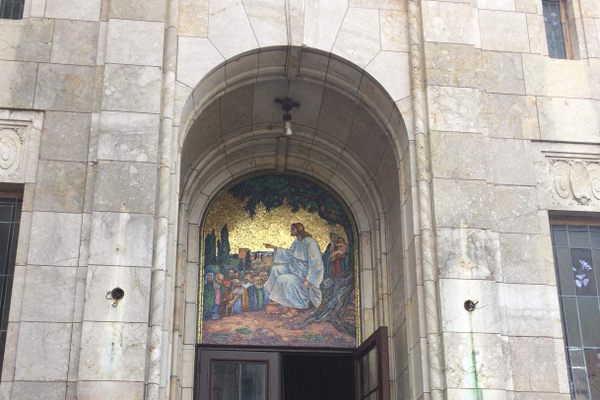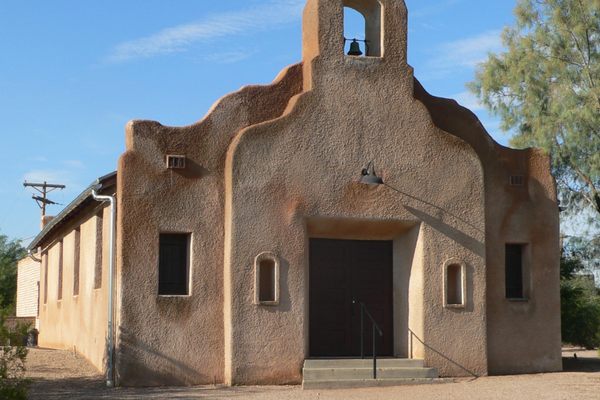About
Built in the late 18th century, the Cathedral of the Most Holy Rosary is the only remaining architectural relic of Kolkata’s lesser-known Portuguese past. Commonly called the Portuguese Church today, the cathedral, painted in a combination of vivid blue and pristine white, still holds services and is currently the seat of the Archbishop of the Roman Catholic Archdiocese of Kolkata.
Originally built as a chapel for Augustinian friars, the Portuguese settlers in 18th-century Kolkata (then called Calcutta) decided to repurpose the building into a new church for the community. With the financial assistance of a wealthy Portuguese trader and philanthropist named Joseph Barretto, the new church was built and consecrated in the 1790s and dedicated to Our Blessed Lady of the Rosary. Situated on Portuguese Church Street and amidst a warren of shops and buildings, the cathedral with its two lofty towers adorned by crown-shaped cupolas is a unique reminder of the city's highly cosmopolitan past.
The Portuguese had arrived in Bengal as early as the 1530s, starting a trading post in Bandel, now a town in the Hooghly district of West Bengal. The Dutch traders arrived next, followed by the French, while the British were the last to arrive in this part of India. With the establishment of Kolkata as a British settlement at the end of the 17th century, descendants of the early Portuguese traders, mainly of Eurasian heritage, began migrating to the city, their numbers becoming substantial in the mid-18th century.
Gradually, the kaleidoscopic population of the city seemed to have raised the necessity of demarcating specific areas for particular races. Since the Portuguese were the only ones to raise fowl, their quarter came to be designated as Murgihatta (also Murgighata), loosely translated as "poultry quarter," though the word murgi usually means "chicken" in Bengali. The cathedral too came to be known colloquially as the Murgighata church.
Apart from the two towers, the eye-catching exterior of the cathedral is adorned with a decorative pediment rendered in vibrant hues. An arched entrance leads to a colonnaded interior with wooden pews set on either side of the aisle. The main altarpiece, painted white with gold highlights, looks resplendent when light from the circular stained-glass windows set high above filters in. The statue of the Virgin Mary with the infant Jesus occupies pride of place on the massive altarpiece. Another interesting feature of the cathedral is the 14 wooden panels in bas relief, which depict the 14 Stations of the Cross.
Related Tags
Know Before You Go
Visiting on a Sunday is ideal as the church is open after Sunday Mass. Taking photographs is allowed.
Delhi and Rajasthan: Colors of India
Discover Colorful Rajasthan: From Delhi to Jaipur and Beyond.
Book NowCommunity Contributors
Added By
Published
June 26, 2019

























